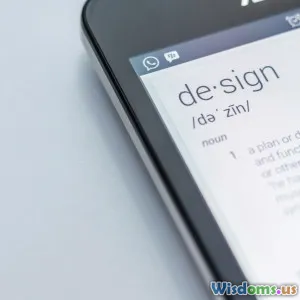
The Role of AI in Design
6 min read Explore how AI is transforming graphic design, enhancing creativity, and streamlining workflows for designers everywhere. (0 Reviews)
The Role of AI in Design
Artificial Intelligence (AI) is no longer a concept confined to the realms of science fiction. In recent years, it has permeated various industries, and graphic design is no exception. As designers strive to create visually compelling works in an increasingly fast-paced environment, AI has emerged as a valuable ally. This article delves into the multifaceted role of AI in graphic design, exploring how it enhances creativity, streamlines workflows, and offers innovative solutions.
Understanding AI in Design
AI refers to the simulation of human intelligence in machines that are designed to think and act like humans. In the context of graphic design, AI can analyze data, learn from it, and make decisions based on that information. This ability opens up a myriad of possibilities for designers, allowing them to focus on the creative aspects of their work while AI handles repetitive or time-consuming tasks.
Enhancing Creativity with AI
One of the most exciting aspects of AI in graphic design is its potential to enhance creativity. AI tools can analyze design trends, color palettes, and user preferences to suggest innovative ideas that a designer may not have considered. For instance, tools like Adobe Sensei utilize machine learning to help designers create personalized experiences by analyzing user data and generating tailored designs.
AI-Powered Design Tools
Several AI-powered design tools have emerged that assist graphic designers in various ways:
- Canva: This user-friendly design platform now incorporates AI to suggest templates, layouts, and design elements based on user input and preferences.
- DeepArt: This tool uses neural networks to transform photos into artworks, allowing designers to experiment with different artistic styles effortlessly.
- Runway ML: A tool that enables designers to create sophisticated visual effects and animations using machine learning models, making high-quality design accessible to non-experts.
These tools not only inspire creativity but also allow designers to explore uncharted territories and experiment with new styles.
Streamlining Workflows
In addition to enhancing creativity, AI significantly streamlines workflows in graphic design. By automating mundane tasks, designers can allocate more time to conceptualizing and executing their ideas. Here are some ways AI contributes to workflow efficiency:
- Automated Image Tagging: AI algorithms can automatically tag images based on their content, saving designers time when searching for assets.
- Content Generation: AI can generate design elements such as backgrounds, patterns, and even entire layouts based on predefined parameters, allowing for rapid prototyping.
- Feedback and Optimization: AI tools can analyze design performance and provide insights on improvements, helping designers refine their work based on data-driven feedback.
The Future of AI in Design
Looking ahead, the integration of AI in graphic design is expected to grow even more robust. As machine learning algorithms become more sophisticated, they will gain an even deeper understanding of design principles and user behavior. This evolution could lead to the development of AI that not only assists but also collaborates with designers, creating a new paradigm in the creative process.
Ethical Considerations
While the benefits of AI in design are manifold, it is essential to consider ethical implications. The use of AI raises questions about the authenticity of creativity and the potential for job displacement in the design field. Designers must find a balance between leveraging AI's capabilities and preserving the human touch that is crucial to artistic expression.
Conclusion
The role of AI in graphic design is transformative, providing tools and insights that enhance creativity and streamline workflows. As designers embrace these technologies, they can focus on what they do best—creating meaningful and impactful designs. By understanding and leveraging AI, graphic designers can unlock new levels of creativity and efficiency, ensuring they remain at the forefront of the evolving design landscape.
Rate the Post
User Reviews
Popular Posts





















